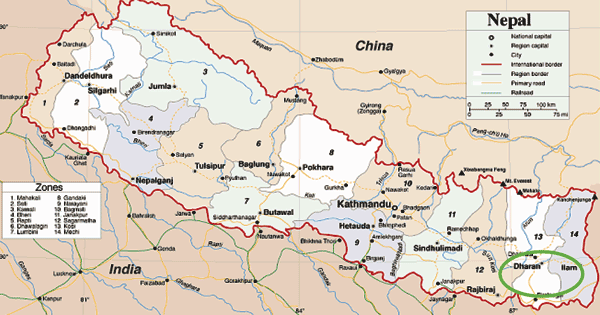Volume 11, Number 8—August 2005
Research
Influenza A (H3N2) Outbreak, Nepal
Figure 1

Figure 1. . Early outbreak of influenza A (H3N2) in southeastern Nepal. The green circle shows the location of 3 Bhutan refugee camps where the outbreak occurred in early July 2004. (Map courtesy of http://www.maps.com)
Page created: April 23, 2012
Page updated: April 23, 2012
Page reviewed: April 23, 2012
The conclusions, findings, and opinions expressed by authors contributing to this journal do not necessarily reflect the official position of the U.S. Department of Health and Human Services, the Public Health Service, the Centers for Disease Control and Prevention, or the authors' affiliated institutions. Use of trade names is for identification only and does not imply endorsement by any of the groups named above.